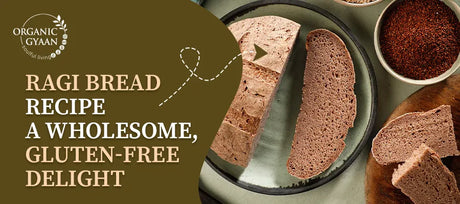Benefits & More
-
Rich Source of Iron & Zinc – Supports red blood cell formation and immune function
-
High in Insoluble Fiber – Promotes gut health and detoxification
-
Good for Heart Health – Rich in potassium and magnesium
-
Contains Phytochemicals – May help lower bad cholesterol
-
Low Glycemic Index – Aids in sugar regulation
-
Supports Weight Loss – Keeps you fuller for longer
-
Strengthens Bones – Contains calcium and phosphorus
-
Warming Grain – Best suited for winter seasons
- Gluten-free alternative to wheat
- Ideal for Vata & Kapha balance in Ayurveda
Bajra, also known as Pearl Millet, is one of the oldest cultivated grains that’s making a strong return to conscious kitchens. Power-packed with iron, fiber, protein, and essential minerals, this grain is known for building stamina, improving heart health, and promoting better digestion.
Its slow-release carbohydrates provide long-lasting energy without spiking blood sugar, making it ideal for people with diabetes, athletes, and growing children. When cooked traditionally, especially with ghee, it becomes a deeply nourishing, sattvic meal. These pearl millet benefits make it a must-have in everyday diets.
Why Pearl Millet (Bajra) is Good for Your Body and the Planet
-
High Iron & Fiber – Helps combat anemia and support regularity
-
Promotes Heart Health – Lowers cholesterol and supports blood pressure regulation
-
Natural Detoxifier – Cleanses the intestines and improves bowel movement
-
Environmentally Sustainable – Requires less water than rice or wheat
-
Grows Without Chemicals – A hardy, pest-resistant crop
-
Supports Local Agriculture – Grows in semi-arid regions, boosting rural income
Choosing unpolished bajra means retaining the grain’s fibrous outer bran, which holds the majority of its minerals and nutrition.
Who Can Benefit from Pearl Millet?
-
People with Iron Deficiency – Helps maintain healthy hemoglobin levels
-
Individuals with Digestive Issues – Insoluble fiber aids regular bowel movements
-
Diabetics – Keeps sugar levels in check due to slow-releasing carbs
-
Active Lifestyles – Provides long-lasting energy for athletes and workers
These pearl millet uses support both traditional meals and modern health routines.
Cooking Tips & Usage
-
Best for: Bhakri, rotla, khichdi, porridge, laddus, thalipeeth, and fermented bajra ambali
-
Soaking Tip: Soak for 6–8 hours to improve digestibility and reduce antinutrients
-
Water Ratio: Pot Cooking: 3:1. Avoid Pressure Cooking for unpolished grain – nutrient loss may occur
-
Fermentation Tip: Cook and soak overnight in water to make Ambali – a gut-friendly fermented drink
Storage & Shelf Life
-
Store in an airtight container in a cool, dry place
-
Shelf life: Up to 12 months when stored properly
Why Buy Our Pearl Millet?
- Unpolished & Naturally Grown
- No Preservatives or Artificial Enhancers
- Sourced Sustainably from Indigenous Farmers
- Packed with Integrity to Retain Freshness
FAQ
1. What is bajra/pearl millet?
Pearl millet is a cereal crop that is widely grown in arid and semi-arid regions of Africa and Asia. It is a member of the Poaceae family, which also includes other important crops such as maize, wheat, and rice.
2. What are the health benefits of bajra/pearl millet?
Bajra is gluten-free, rich in fiber, protein, vitamins, minerals, and antioxidants. Ideal for celiac and beneficial for overall health.
3. How is bajra/pearl millet used in cooking?
Pearl millet is versatile in cooking. Enjoy it in diverse dishes like khichdi, idli, dosa, pancakes, cake, poha, and upma for a nutritious and tasty experience.
4. Is bajra/pearl millet gluten-free?
Yes, pearl millet is gluten-free, which makes it a good option for people with celiac disease or gluten intolerance.
5. What is the nutritional profile of bajra/pearl millet?
Pearl millet is a nutrient powerhouse with fiber, protein, vitamins, and minerals. A cup provides 6g protein, 2.3g fiber, and 205 calories.
